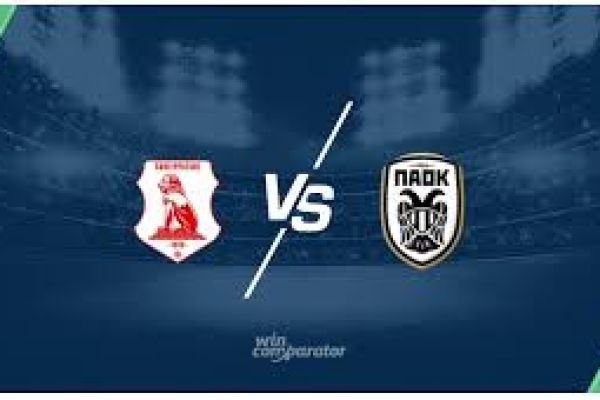The fixture between Panserraikos FC and PAOK FC is more than just a three-point contest; it is a battle for regional pride that resonates deeply throughout Northern Greece. While PAOK's primary focus remains firmly fixed on the Super League summit, the trip to Serres represents a formidable test against a highly motivated, defensively organized Panserraikos side backed by a fiercely passionate home crowd. This analysis breaks down the context, form, and crucial tactical factors that will decide this latest Macedonian clash.
The Context: Regional Pride and the Unlikely Rivalry
PAOK, the "Dikefalos tou Vorra" (Two-headed Eagle of the North), commands a vast following and consistently battles for domestic honors. Panserraikos, a club rich in history but often fighting mid-table battles or relegation scraps, represents the enduring spirit of the region of Serres. For the home side, this fixture is their cup final—a chance to register a monumental upset and claim bragging rights over their powerful Thessaloniki neighbors.
This disparity creates a unique dynamic: PAOK, armed with European experience and superior resources, must handle the pressure of expectation, while Panserraikos operates with the freedom of the underdog, prioritizing defensive discipline and seizing moments of opportunity.
Current Form and Standings
Entering the match, PAOK invariably sits higher in the table, typically within the leading pack vying for the Championship playoff spots. Their form is characterized by high-scoring victories at home and disciplined performances away, often dictated by the form of key attacking players like Taison, Andrija Živković, and the central striker.
Panserraikos, by contrast, relies heavily on points secured at home. Their recent form is often mixed, defined by hard-fought draws against similar-level opposition and narrow defeats against the league’s powerhouses. Their success hinges on consistency in defense, making them exceptionally tough to break down on their own turf, especially under the lights.
Panserraikos’s Tactical Blueprint: The Compact Counter-Attack
Panserraikos is expected to deploy a defensive shape—likely a 5-3-2 or a deep 4-4-2—designed to minimize space and suffocate PAOK’s central creative axis.
1. The Low Block Discipline
The core objective will be frustration. The defensive line will sit deep, often within 30 yards of their goal, creating two tight banks of four or five players. The aim is to force PAOK into predictable wide areas or long-range shots. The central midfield trio will be tasked with relentless tracking and screening the back four, preventing quick passes into the feet of PAOK’s attacking midfielder or striker.
2. Utilizing Transitions
Panserraikos’s primary offensive threat will stem from quick transitions. Upon winning the ball, they will bypass the midfield with long, vertical passes aimed at their two forwards. If a 5-3-2 is utilized, the wing-backs become crucial outlets, utilizing their freshness to sprint forward and overlap, aiming to deliver early crosses into the box before PAOK’s recovery run is complete. Set pieces will be treated as high-value scoring chances.
PAOK’s Tactical Blueprint: Breaking the Defensive Wall
Under their experienced coach, PAOK will likely stick to a dominant 4-2-3-1 formation, but the strategy must be precise to dismantle the anticipated low block.
1. Full-Back Overload and Width
The key to unlocking Panserraikos lies in exploiting the wide channels. PAOK’s full-backs (such as Baba Rahman and Rodrigo Soares/Jonny Otto) must operate essentially as wingers, providing maximum width and constantly delivering crosses. This action will force Panserraikos’s wide midfielders to track deep, creating space for the double pivot (e.g., Schwab and Meïté) to play quick passes into the half-spaces for the advanced midfielders.
2. Central Creativity and Movement
The attacking midfield trio must display exceptional movement. Taison, if starting, will be crucial in creating dynamic triangles, pulling center-backs out of position with decoy runs, and using his vision to play through-balls. The striker's role will be less about scoring and more about link-up play, drawing the central defenders high before laying the ball off to a runner from deep. Patience and lateral circulation of the ball are paramount; an early, desperate long ball plays directly into Panserraikos’s hands.
Key Battles That Will Define the Outcome
1. The Full-Back vs. Wide Midfielder Duel: Can PAOK’s attacking full-backs dominate their flanks, or will Panserraikos’s tireless wide players successfully pin them back and initiate fast breaks? If the full-backs are neutralized, PAOK loses a crucial attacking dimension.
2. The Central Pivot (PAOK) vs. The Engine Room (Panserraikos): The game will be won or lost in the middle third. If PAOK’s central midfielders can maintain a high tempo and recycle possession quickly, they will eventually find gaps. If Panserraikos’s three central midfielders can crowd the area, intercept passes, and force turnovers, they will keep the score level.
3. Set Piece Supremacy: Given the likely compact nature of the match, a single moment of brilliance or a successful set piece could decide the outcome. Panserraikos will attack every corner and free-kick with aggression, while PAOK’s defense must remain focused and robust until the final whistle.
Ultimately, this fixture is a classic test of dominance versus defiance. While PAOK holds the technical and statistical advantage, Panserraikos’s ability to turn the match into a physical, stop-start battle of attrition, combined with their potent home support, makes this encounter dangerously unpredictable for the league leaders.








